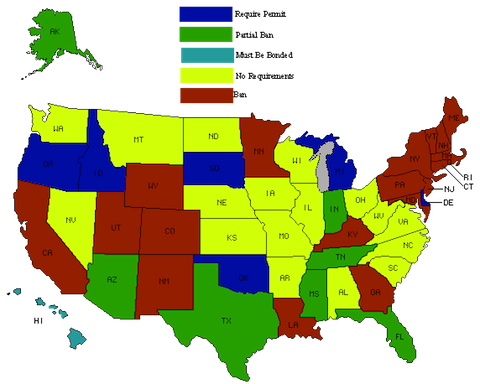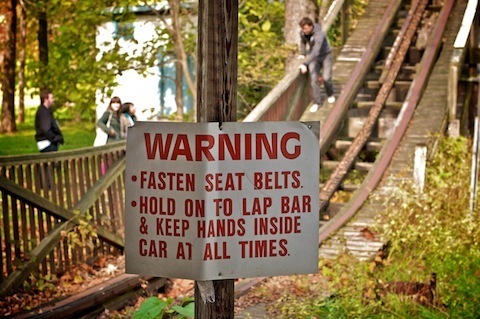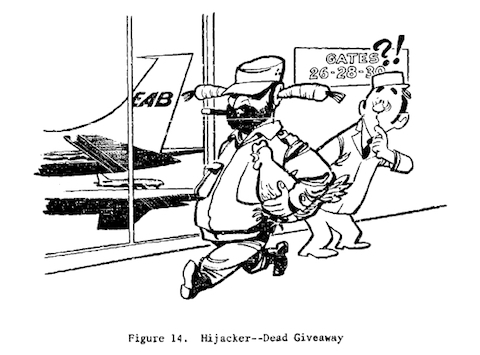Brendan I. Koerner's Blog, page 10
December 21, 2012
The Power Down

All that stands between me and a five-day vacation is a pair of 300-word Wired pieces. Let me get to that so I get to teaching Microkhan Jr. the finer points of falconry. Back here after the Christmas lull.
December 19, 2012
Born to Greatness
Alice Strick, the current world record holder in the Canadian-style one-foot high kick, is part of an athletic dynasty: her mother and cousin were also champions at the World Eskimo-Indian Olympics. While Strick’s feat in the clip above may seem effortless, I can assure you that it required near-superhuman athleticism. I know this because I just tried it here at Microkhan world headquarters; suffice to say that the years have not been kind to whatever hops I once had. Perhaps the four-man carry is more my speed these days.
December 18, 2012
Beyond Red/Blue

As the map above shows, our nation’s pattern of monkey-ownership laws is not easy to predict based on geography alone. Reliably blue states such as Washington and Illinois have no problem with personal primates, while conservative bastions such as Louisiana and Georgia have enacted blanket bans. I can only guess that legislators react to specific incidents, which open their eyes to the utter folly of adhering to strictly ideological positions.
December 14, 2012
Parallel Lives

Ireland’s Travellers invite a fair amount of voyeurism on account of their reputation for physical toughness and petty crime. The conventional wisdom is that this social group has decided to remain distinct from mainstream Irish society, in order to preserve their unique cultural traditions. But German photographer Birte Kaufman, who has documented life in a Traveller caravan in a surprisingly intimate way, contends that these outsiders didn’t necessarily elect to exist on the margins. Rather, they drifted away once the skills for which they were known—specifically fixing mechanical gadgets—became largely irrelevant to the modern economy:
In earlier times, when they were migrant workers or tinkers, everybody needed them; they were accepted. And then they lost their function in society, and they had to find other ways of doing business. I don’t know what has lead to the breakdown, but it is to do with the fact that a lot of them lost their function in mainstream society. Something has happened. I would say it is deep inside, you don’t see it completely; it is not obvious, but you see it in the way that some of the people look at them. They are so completely different in some ways from the main settled Irish community.
The whole project is well worth your time, as Kaufman took an immersive approach and actually joined her camper to a Traveller caravan. She gets major points for commitment to the endeavor.
December 12, 2012
Unequal Trade

If you have even a passing interest in colonialist cunning, you owe it to yourself to check out the National Museum of Australia’s dynamite exhibit on Aboriginal breastplates. These were baubles that the European arrivals provided to Down Under’s native inhabitants, ostensibly to honor certain individuals for being community leaders. But the givers desired something in return that was, of course, much more valuable than the metal that went into the trinkets:
By the 1830s it was common practice among pastoralists to present the Aboriginal man perceived to be the local leader with a gorget stating his position of authority in the vicinity of the settler’s new property. In return, the Aboriginal leader was expected to prevent his people from interrupting the settler’s pastoral endeavours and where possible to supply labour or information about the land.
This tactic reminds me so much of the genius maneuvering of King Louis XIV of France, who kept the aristocrats in line by having them scramble after petty jobs at Versailles. The powerful get that way by convincing their rivals to settle for things that only have the illusion of value.
That said, the Aboriginal breastplates are gorgeous works of art. Check out the whole gallery here, and read about the significance of all the kangaroo and emu motifs here.
December 10, 2012
Accept Your Fake

One of the issues I’m grappling with on my in-development Wired story is how we’ll need to redefine the notion of authenticity in the era of ubiquitous 3D printing. If I can make a perfect copy of any object without leaving the comfort of my home, does the original lose its aura of value?
That’s a question that folks in New Ireland are now confronting, as they ponder whether to accept 3D copies of ceremonial masks that German colonialists swiped in the 19th century. Before I read the piece, I could only consider the German offer a slap in the face—why shouldn’t they be the ones left with the copies, since they only obtained the originals through theft? But two current New Ireland residents do excellent jobs of playing the devil’s advocates in the piece:
“I realise that these artefacts are stored in special places and special care,” says Adam Kaminiel, a modern Nalik carver. “I don’t think we have that special place and special care at the moment.”
Chief of the New Ireland clan, Martin Kombeng adds that matters could get complicated if the masks were repatriated.
“Maybe I think differently, but I prefer to leave the masks as they are because once they are back, many people will try to claim them.”
It is Kaminiel’s argument that I find most interesting, because he is essentially saying that he would prefer that the originals be preserved for the long-run rather than have them return and deteriorate. Even if the copy and the original are indistinguishable from one another, he feels that the mask created by his ancestors has intrinsic value separate from its appearance. I have to wonder if this is a viewpoint that will vanish over the next few generations, as 3D printing entirely blurs the line between fake and real. The psychological heft of objects may no longer be in who created them, but in purely in how they are used.
December 7, 2012
UNIVAC Could Have Saved Us
Desperately wanted to do a West Papua post this morning, but a critical Wired deadline beckons. In my absence, please marvel at the UNIVAC promotional film above, in which the early computer is touted as the instrument capable of liberating our species from meteorological uncertainty. Ah, to think there was a time when the phrase “two thousand calculations per second” blew minds.
December 5, 2012
Too Fat for the Fuzz, Cont’d
After I microblogged this morning about overweight Indonesian cops, a treasured reader reminded me that Microkhan had covered this territory before. In July 2009, I wrote about the case of Chris Parent, a police officer in Bellevue, Nebraska, who was fired for being too large to perform his job properly. (See video above, which was Exhibit A in his department’s decision.) Parent contested his termination, however, and apparently was vindicated, as this story about the retirement of Bellevue’s embattled police chief makes clear:
Stacey, who has worked for Bellevue since 1978, has been involved in several controversies in Bellevue in recent years. He fired Police Officer Christopher Parent for being overweight, saying it violated a department policy requiring officers to maintain a high level of physical conditioning. Parent’s termination was overturned by the courts.
After the city paid Parent more than $103,000 in back pay, Stacey placed him on indefinite paid administrative leave. As a result, the city paid Parent about $170,000 in salary and benefits without his working a single day.
The whole story is worth a read, if only to marvel at the intrigue in Bellevue’s police department. It’s like a miniature version of The Wire over there in eastern Nebraska.
December 4, 2012
Trompe L’Oeil

As we recently explored in our post about wildlife strikes, even the most advanced technology cannot withstand Mother Nature’s meddling. Roller coasters are another case in point, as explained in this rather fascinating bit by a veteran amusement-park techie:
A ride error is usually caused by an issue with the photo eye sensors…On Talon, the train has eight cars, so the photo eye needs to have its connection broken eight times so that the computer knows that all eight cars have traveled through the course. There are several photo eye sensors on the ride, including a set at each end of the station, a set on the lift, a set near the trim brake at the bottom of the Immelman loop, and then multiple sets on the brake run.
When a sensor is not broken eight times exactly, the computer senses that something is wrong. In the most drastic case, a car has become detached from the rest of the train. In this case, the sensor may only be broken seven times, so the sensor immediately relays the information to the computer that something is wrong and the ride must emergency stop, which is why sometime rides will stop on the brake runs, lift hills, or even halfway in or out of the station, because power is immediately cut off from the ride and all of the brakes close to avoid collisions.
This is a great insight as to how safe rides truly are, but that doesn’t explain why a ride error may occur when everything is running fine. In most cases, it is simply a bird, bug, or butterfly landing on the photo eye, causing it to be broken but not the correct number of times. The computer thinks something is wrong and shuts down the ride.
In other words, an insect the size of a thumbnail can cause a $13 million piece of hardware to screech to a halt. The more elaborate our systems, the greater their vulnerabilities to the tiniest of actors.
(Image via What’s His Face)
November 30, 2012
MD

Since I’m in the habit of noting significant Microkhan miletones, I feel obligated to alert y’all to the fact this is my fifteen-hundredth post. Thanks a million to everyone who has followed this often ragtag project since its launch nearly five years ago; I promise that good things lie ahead, especially once I get the next book off my plate. Though I’ve been tempted to abandon Microkhan on several—okay, numerous—occasions, I know I’d miss having this public scratch paper. And I’d definitely miss engaging with the learned commentariat about topics ranging from linguistics to lifeboats. Please do keep swinging by, and prepare for an awesome deluge of hijacking-related posts as the launch date for The Skies Belong to Us draws near.




